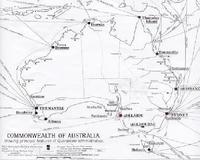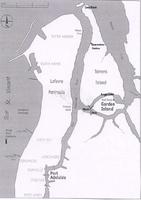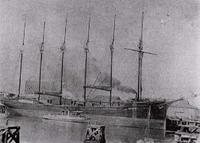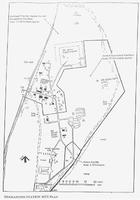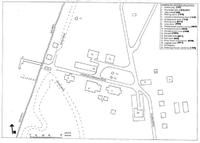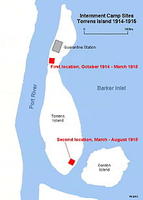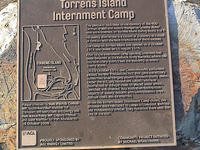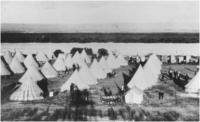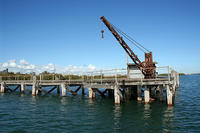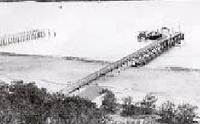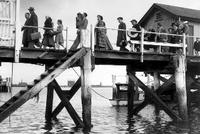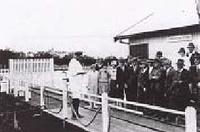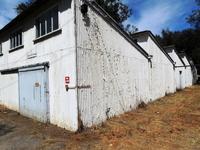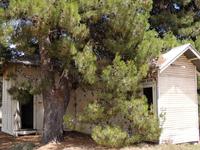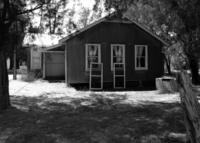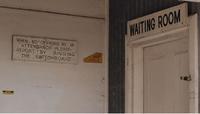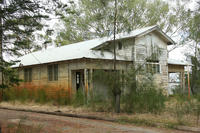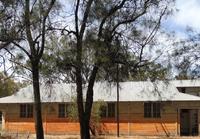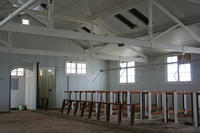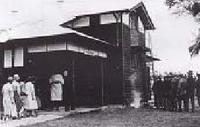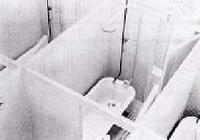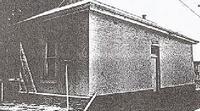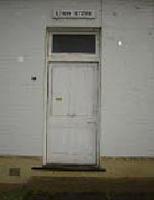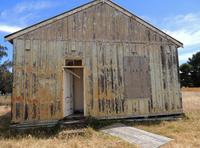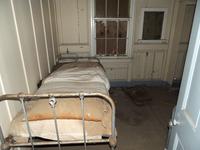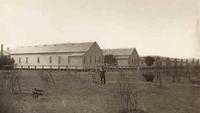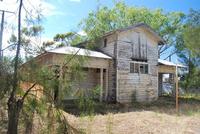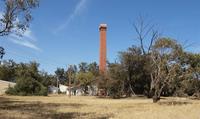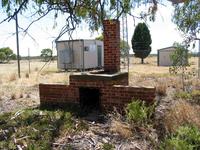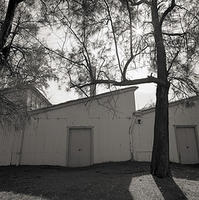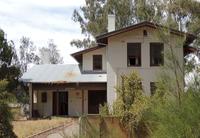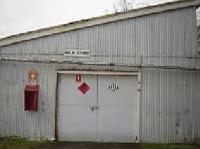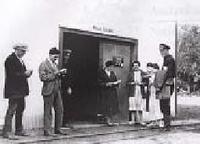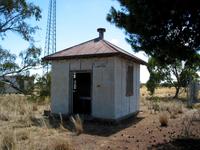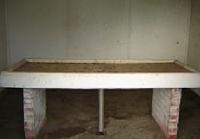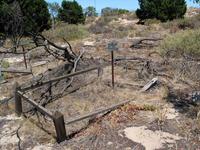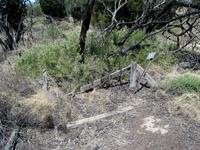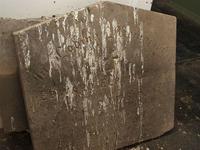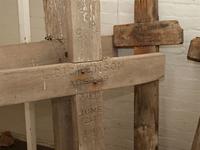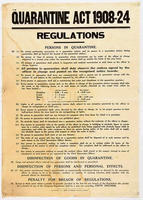
South Australian Medical Heritage Society Inc
Website for the Virtual Museum
Home
Coming meetings
Past meetings
About the Society
Main Galleries
Medicine
Surgery
Anaesthesia
X-rays
Hospitals,other organisations
Individuals of note
Small Galleries
Ethnic medicine
- Aboriginal
- Chinese
- Mediterran
Torrens Island Quarantine Station
Acknowledgements: We are most thankful to Dr David Buob for allowing us to use his presentation about the history of the Torrens Island Quarantine Station.
Quarantine derives from a Venetian practice of 40 days detention or compulsory isolation for ships and people to prevent the spread of contagious diseases.
19th Century fears of smallpox and other diseases in the rapidly developing Colonies instilled paranoia in these communities, and quarantine stations helped ease such anxieties by temporarily confining crew and passengers upon arrival in Australia.
Islands were a preferable location, in that they could successfully quarantine immigrants, without fear of outside contact.
12 Quarantine stations were established at each of the major ports of entry to Australia in colonial times, and for many migrants the quarantine station was their first experience of a new life in Australia.
Establishment
The establishment of a quarantine station on Torrens Island was first proposed in 1850 with the passing of Ordinance No 3 in SA "to provide for the prevention of the spread of epidemic and contagious disease on the arrival of merchant vessels" (Register 1877:4b). The usual detention was for 14 days.
The location of Torrens Island at the mouth of Adelaide's Port River, but isolated from the main settlement, made it ideal for a quarantine station.
The total area of Torrens Island at low water mark is approximately 815.7 hectares. Shaped like a leg of mutton, the Eastern side is subject to flooding at high tide leaving the Western side which can be used at all times.
It could be reached only by launch or barge, and had to provide its own facilities (including power, water and sewerage). Sections 869 & 870 were reserved in 1854 and the station was in use by 1855.
Edmund John Eyre was gazetted to a position of responsibility in relation to the "prevention of the spread of epidemic and contagious disease".
Early Days - A tent City
The previous owner of the chosen quarantine site, Mr Isaac Yeo, was reluctantly asked to leave when the first infected ship, the Taymouth Castle carrying passengers with small pox, anchored within Lipson's Reach in August 1854.
A temporary group of military style tents provided accommodation, food equipment was brought in and huge coppers were used to boil the passengers' clothes. Many items were dropped into chloride of zinc for further disinfection.
The Observer noted in 1855 (p4f) that organisational structures had been established that proved most conducive to the good order of the Establishment: single females are on the Eastern side and near the Doctor's house, the married people are in the centre and the single men are at the Western end.
Need for a Permanent Station
In 1856 The Register announced there was a need for a proper station to be erected, a process which was to take 3 months.
The citizens of Port Adelaide responded by holding protest meetings, their objections being:
- It's too close to the Port
- Cause traffic problems along the Port River
- Those confined will attempt to escape the island at low tide
- The disease(s) would float over to the Port
- Strict isolation will not be enforced on the infected
Despite the objections, the Quarantine Commission & the Medical Board uniformly decided in favour of Torrens Island rather than the other options of Kangaroo Island and Wauraltee Island because it was:
- Within easy reach for the conveyance of those needing to be quarantined
- Additional medical or other assistance was close at hand when required
- A good supply of water could be imported with little difficulty
Finally, on 21 June 1878 the Government of South Australia began construction. Torrens Island officially became a quarantine station in 1879. The Architect was EJ Woods.
Thirty prefabricated wooden houses from America provided passenger accommodation, doctors' residences, an infectious diseases hospital, mortuary and kitchens. Only one of these houses remains, the rest the Commonwealth sold off in 1980 at Public Tender.
The Quarantine Station had a village like, semi-rural atmosphere and was set up to be virtually self-sufficient. Roads were set out and named, gardens landscaped and station records recall tall blue gums and pines being planted to 'add character' to the flat low lying landscape. Rain water was stored in 4 1000 gallon underground tanks and fresh ground water was used to top up supplies. The windmill was used to pump water and elevated storage tanks supplied water for fire fighting.
Subsequent Development
Torrens Island was run by the South Australian government throughout the second half of the nineteenth century, but with the proclamation of Commonwealth quarantine legislation in 1909 it passed to the Australian Government.
At this time the station covered 222 hectares (551 acres) and had accommodation for up to 224 people with 56 being located in dormitories and 168 in 23 cottages.
These buildings were constructed of wood and iron supported on jarrah blocks with ant capping. There was also a 6 bed isolation hospital, nurses' quarters and 2 four bed observation wards.
In 1912 WJ Getting became Chief Quarantine Officer. Development during the period of 1910-1924 was considerable. The Commonwealth foresaw the need for more quarantine facilities as immigration increased and built accordingly.
The World War 1 Internment Camp
On 9 October 1914 an internment tent camp under armed guard was established some 500 metres south of the Quarantine Station. It held up to 400 men of German or Austro-Hungarian background or crew members of enemy ships who had been caught in Australian ports at the beginning of the war. They were held without trial under the provisions of the War Precautions Act 1914.
In its first few months the Torrens Island internment camp was uncomfortable, but not harsh. The internees were housed in tents and made to cater for their own cooking requirements, including growing their own food. Despite these hardships, the inmates managed to organise cultural events and entertainment, and even published a number of editions of a camp newspaper.
In about March 1915 under a new commander, Cpt GE Hawkes, the camp was shifted to another location further south away from the Quarantine Station, on the southern end of Torrens Island. Captain Hawkes was to prove extremely unsuitable for the position, and under his command treatment of the internees deteriorated.
The camp was quietly closed in August 1915, many of the internees were released, and others were transferred to a more humanely-run camp at Holsworthy in New South Wales. Captain Hawkes was dismissed from the service, and in 1916 a Court of Enquiry was held into his conduct. The official records of the Torrens Island camp were destroyed, and today virtually all that is known about the incident comes from the only wartime records that survive, principally the typescript and evidence from the Court of Enquiry.
During 1918 & 1919 a number of people from vessels, including troops returning from WW1 aboard the Hospital ship TSS Boonah, were quarantined.
After World Wars 1 & 2 the Quarantine station was used to treat soldiers who had contracted influenza and venereal diseases abroad. In 1921 a special VD hospital and compound was built to the south of the main buildings. Six self-contained Besser block huts (32) were built during the 1950’s to provide accommodation for medical & veterinary staff. The last period of human quarantine was in 1954 when passengers and crew of the P&O British cruise ship the Strathaird reported small pox.
In 1979, 2 years after the WHO declared an end to smallpox, action was taken to close Torrens Island as a human quarantine station. 1,023 cases of human quarantine were dealt with between 1923 & 1970. Ten deaths had been recorded by 1932 on the island and none since.
Animal quarantine continued but closed in the mid 1990's, and the avian egg hatchery will be moved to the Eastern States in the near future.
In 1987 203 items were removed from the quarantine station and sent to the National Museum of Australia. Most of the collection dates from the period beginning with the influenza epidemic that followed the Great War (1914-1918) and was used through to the end of post World War migration in the 1960's. Two obvious 19th century exceptions to this are the book Mayhew's German Life, dated 1864 (seven years before the creation of the German nation) and a mid 19th century government issue bed believed to have come from the Port Arthur penal establishment in Tasmania. The closure of Port Arthur and the establishment of Torrens Island Quarantine Station were barely 12 months apart and it is possible that government stores were transferred from Port Arthur for use at Torrens Island Quarantine Station.
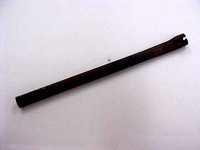
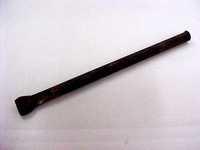

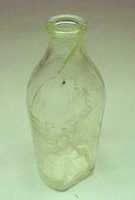
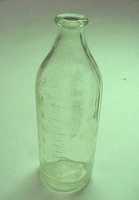
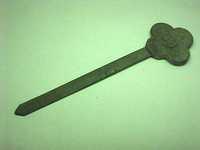
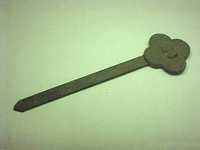
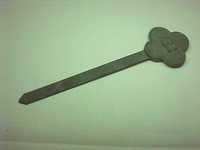
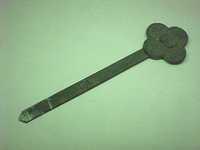
Quarantine Procedures 1910 onwards
Passengers would disembark onto the passenger jetty [(2) 1879 266 ft long with right angle extension added in 1891. Rebuilt 1923].
The passengers walked through a Fumigation chamber (demolished) at the end of the jetty.
Their belongings were taken along a tramline to the luggage and disinfecting block [(16) 1913] for fumigation in the single large autoclave. Clean luggage was then sorted and stored in the Eastern section.
It was vital to separate infected and 'clean' passengers, and sick people were taken directly to the hospital in the isolation compound. Staff would enter & exit through the building now referred to as the part isolation block.
Other more healthy passengers were guided to the waiting rooms [(4) 1915] to be received, questioned, review health records, and distributed the passengers & crew to allocated accommodation. They were separated into first, second & third class and provided with single men, single women, or married quarters.
All passengers, even though they were not sick, were sent through the bathing block [(7) 52ft by 39 with 10 first class plunge bath units on one side & 13 shower bath units on the other. Each bath unit had 3 cubicles, 1 for undressing, one for the bath & last for dressing]
They then received clean linen from the Linen Store [(8) 1916 ]
and proceeded to their accommodation.
Once cleared of infection (2-3 weeks) people would move into the 'clean' areas that had their own kitchen, bathrooms and accommodation.
The steam boiler [(13) 1916] powered the luggage store, bathing house and laundry. The chimney and incinerator burnt items that could not be satisfactorily disinfected.
Bulk store – Linda Honey & National Archives
Mortuary 1912 - DB & National Archives
-o0o-
